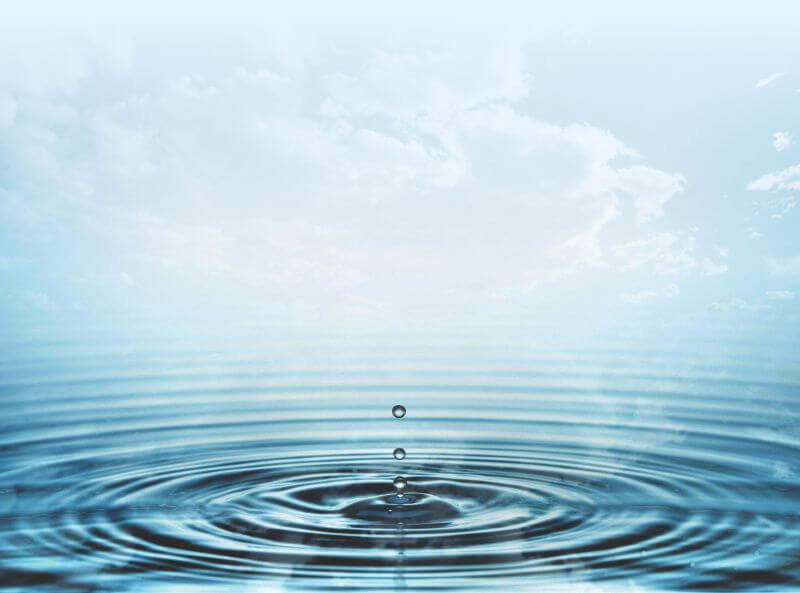
The paper manufacturing process generates significant quantities of waste water. The raw waste water from paper and paperboard mills can be potentially very polluting if not treated properly. This survey discusses with the mill owners where they describe the treatment processes which are used to minimize these effects. Also discusses the way in which theses mills determine the process plan for the treatment of liquid wastes from the manufacturing of paper. Besides it also present the viewpoint of various suppliers specializing in solutions related to water and waste water treatment.
.

Emami Paper Mills Ltd
Water Treatment Standards in India
CPCB has prescribed the norms for the treated waste water before its discharge to the recipient bodies and Indian Paper Mills are known to be religiously following the norms.
Is Indian paper industry conservative about adopting the right technology for water treatment?
Not at all – many of the mills are going for better and technologically advanced processes for recycling and reusing treated waste water and also many of the mills have invested lot of money in the recent past for improvements of process resulting in less polluted discharge and hence better treated waste water.
Lacking in water treatment in India and how this can be improved?
I cannot say that there are any lacking points for Indian Paper Industry in waste water treatment, but obviously there are scope for improvements in waste water treatment and also in Process Technology to reduce fresh water consumption and for recycling and reusing treated waste water as much as possible.
Factors to be kept in mind while selecting the overall process plan of waste water treatment?
• The treated waste water should meet the standards as specified by the State and Central Pollution Control Boards
• Scope for improvements especially for reducing fresh water consumption
• Development and improvement in process technology to reduce the problems at source itself.
.

Maxim Specialty Chemicals Pvt Ltd
Water Treatment Standards in India
Indian Paper Industry, which is one of the most water intensive industries, has never been so focused on water reuse as we have seen in last one decade or so. Further, the scarcity of fresh water coupled with stricter environmental standards associated with waste water effluents from paper mills made “water conservation” has become a key objective of paper mills. So this very objective of water conservation led mills to use various water treatment methods which include mechanical, chemicals and very recently enzymatic treatments.
Is Indian paper industry conservative about adopting the right technology for water treatment?
Indian Paper Industry’s overall approach towards water treatment has taken a new dimension in recent times in view of energy cost associated with over usage of water and tighter environmental standards. However that doesn’t imply that all the paper mills have started taking water treatment as seriously as it should have been as most of them still resort to traditional way of treating their Fresh, Boiler, Cooling and Effluent water by treating them with only basic organic and inorganic chemicals which may not be very effective methods. However all this is changing as water now has become as precious as raw material so therefore mills have started looking at various water treatment technologies for its maximum reuse and in few cases, they target Zero Liquid Discharge aka “ZLD” a popularly coined term in paper mills nowadays.
Lacking in water treatment in India and how this can be improved?
I believe that water treatment in Indian paper mills is still at a primitive stage which is now slowly changing due to reasons already mentioned above. Indian paper industry, at large, has never been very water sensitive industry until recently due to which it never got desired exposure to various water treatment methods especially specialty chemical treatments. Also paper industry in India always considered water treatment cost as an extra burden which they could live without. So, therefore the Indian paper industry is lacking a systematic approach towards water treatment ways and means.
In my personal opinion, mill should generally start with a proper water audit across its various processes in order to understand water footprints and various parameters against industry benchmarks. Having this water audit done by some water expert will certainly help in making more precise assessment. Once this part is over, mill can look at various water treatment methods based on their techno-commercial feasibility.
Factors to be kept in mind while selecting the overall process plan of waste water treatment?
The following factors are most important while selecting overall process plan for waste water treatment:
• The degree of water closure.
• The influent and desired effluent parameters.
• All available waste water treatment technologies to achieve those two parameters as described in point no 1 & 2.
• The cost associated with each treatment method.
.

Gayatrishakti Paper & Boards Ltd
Water Treatment Standards in India
Truly speaking, there are no firm standards being adopted by paper industry. Leaving aside some good paper manufacturing units, all others are running their treatment plants in a very non technical way. This results into wastage of precious fresh water.
Is Indian paper industry conservative about adopting the right technology for water treatment?
Yes definitely.
Lacking in water treatment in India and how this can be improved?
Knowledge is lacking with regard to water treatment in Indian paper industry. Environment engineers are not being appointed for the treatment plant in many mills. In fact treatment plants are given the last priority in the mills. This can be improved with right thinking and by making people more aware about the importance of waste water treatment plants. Treating the waste water adds money to the profits and it is rightly said “waste is money and not the waste”.
Factors to be kept in mind while selecting the overall process plan of waste water treatment?
The main factors to be kept in mind are:-
• What is the volume of the waste water to be treated?
• What are the impurities present in the water?
• What quality of treated water is required?
This all will give the guidance to design the suitable water treatment plant.
.

Tellabs Chemicals Pvt Ltd
Water Treatment Standards in India
The general water generation standards in Indian Paper Industry are a follows:
1. Large pulp & paper mills: 175 m3/tonne of paper produced in comparison to the global standard of 80 to 100 m3/tonne.
2. Small pulp & paper
a. Agro-residue based: 150 m3/tonne of paper produced in comparison to the global stand of 80 to 100 m3/tonne.
b. Waste paper based: 50 m3/tonne of paper produced.
Is Indian paper industry conservative about adopting the right technology for water treatment?
Yes, I feel the Indian Paper Industry is conservative about adopting the right technology for water treatment. Except for a few large mills most mills lack adequate treatment facilities.
Lacking in water treatment in India and how this can be improved?
In majority of the paper mills, the equipments are very old and efforts for modernization are totally lacking which causes the increase in the level of pollutants. The effluent generated in this industry contains very high raw cellulosic material resulting in high levels of COD and color. The pollutant load by small and medium paper mills is also very high due to lack of commer-cially viable chemical recovery system.
To improve this situation industry must adopt production process control technologies to reduce effluent volume and pollutant load discharge. These process control technologies can be incorporated:
• Segregating cooling water discharge and reuse.
• Vacuum pump seal water collection and reuse.
• Caustic area spill collections for recovery and recycle.
• Spill collection in the evaporator, recovery, causticising, liquor storage, brown stock, paper machine and bleach plant areas for recycle.
• Evaporator surface condenser to replace barometric condenser to facilitate reuse of condensates in mill.
• Evaporator boil-out tank for collection of weak black liquor for recycle to chemical recovery.
• Lime mud pond to reduce total suspended solid discharges in white liquor clarification and mud washing area.
• High pressure showers for wire and felt cleaning save 90% of the water used in conventional shower applications.
• Improvement in fibre recovery systems by installing new vacuum disc filters which enables the reuse of clear water in high pressure showers, dilution, chemicals preparation etc.
• White water storage for wire cleaning showers, pulp dilution and bleach plant washing.
• Rejects separation using sidehill screen from pulp and paper mill cleaners, pressure and centrifugal screens eliminates up to 40 percent of solids to the treatment plant from these sources separated, rejects fit for landfill disposal.
• Oxygen delignification incorporated before bleaching sequence facilitates caustic extraction effluent recycle, for chemical recovery. (Oxygen delignification/bleaching results in a BOD reduction of 81 percent and a colour reduction of 89-92 percent in bleach plant effluent and a BOD and colour reduction of 30 and 50 percent, respectively, in total mill effluent).
• Advanced brown stock washing systems like twin drum washers, diffusion washers etc reduce the usage of water in the washing section of a mill.
• Adopting hot stock screening and cleaning in the pulp mill section further reduces the usage of water and also reduces the wastage of black liquor.
Most of the above technologies are being used in many of pulp and paper industries abroad and have resulted in reducing the effluent volume and pollutant load discharge.
Factors to be kept in mind while selecting the overall process plan of waste water treatment?
• A management with 3R (Reduce, Reuse and Recycle) policy with respect to water usage.
• Upgradation of production process control technology should result in efficiency in production with concurrent waste reduction at source.
• A comprehensive plan enabling the paper mills, specially small and medium units to modernize their plant and machinery so as to minimize the effluent generation at various stages of production.
.

Trident Ltd
Water Treatment Standards in India
| Parameter | Paper Industry |
| Chemical Oxygen Demand (COD) | 300 mg/l |
| Biochemical Oxygen Demand (BOD) | 26 mg/l |
| Total Suspended | 40 mg/l |
| pH | 7-8 |
Is Indian paper industry conservative about adopting the right technology for water treatment?
• The paper industries are very much conservative in adopting the right technology. The cost involved in new technology is too much expensive in present scenario of paper business competition.
• Most of paper industries are using conventional technology of surface aerators having low oxygen transfer efficiency.
• The technology is advancing towards diffuse aeration having higher oxygen transfer rates. Industries are marching forward to adapt this technology. Few paper mills have already installed such technology and some are in the process of putting.
• The industries are also adopting Bio-methanation plants for washing section/high COD streams.
• Lots of research & technology is required in commercial implementation of tertiary treatment of color removal and RO system on final treated effluent.
Lacking in water treatment in India and how this can be improved?
• High cost in tertiary treatments i.e. RO and color removal.
• Color removal from final treated water is major challenge in paper industries. After color removal water can be utilized in process.
• More emphasis should be given in reduction of fresh water usage by adopting better recycling and reuse of water.
• The financial help from government / developed countries to implement the expensive technology in waste water treatment can be encouraging step like Carbon Credit.
• Use of latest waste reuse and recycle equipments and new system that can be installed within pulp and paper technological process without changing process equipments. These systems allows producer to reuse, reduce, and recycle.
• Companies should develop several technological advancements for water reuse such as multi barrier filtration system, membrane bio reactors, Nano filtrations and reverse osmosis (RO) and rapid sand filtration etc.
Factors to be kept in mind while selecting the overall process plan of waste water treatment?
• Select the latest technologies of diffused aeration.
• The main input in waste water treatment plant is power. Select the plant so that pumping cost is minimized by designing the WWT plant on level gradient.
• Differentiate high COD streams and install Bio-methanation plant to convert waste in to energy.
.

ABC Paper Ltd
Water Treatment Standards in India
Existing standards are not very competitive, the other day some delegates from Taiwan were sharing about discharge norms, they were 30 BOD & 50 COD, whereas in India it is 10 times more. We are just managing the Pollution Board rather than getting ourselves satisfied.
Is Indian paper industry conservative about adopting the right technology for water treatment?
Very true, adoption of right technology is still a dream in the Indian paper industry. Actually we see every project as a payback item & when it comes to water conservation the same comes under least priority, we always seek the shortest route & low investment cost technology adoption.
Lacking in water treatment in India and how this can be improved?
Getting in the best technology available in industry along with bringing in more vendors who are total solution provider.
Factors to be kept in mind while selecting the overall process plan of waste water treatment?
• Minimizing water consumption without quality deviation.
• Maximize the reuse of process water.
• Logical treatment of fresh water.
.

Krofta Engineering Ltd
Water Treatment Standards in India
The standards prevailing in water treatment in Indian Paper industries are very high which is approximately 50m3/tonne in waste paper based paper mills and 100 m3/tonne of paper for agro-waste based paper industries.
Is Indian paper Industry conservative about adopting the right technology for water treatment?
Indian paper industries are conservative in adopting the new technologies available for water treatment because of the cost factor. They are reluctant to invest money on water treatment as they say that there are no returns to the industry in this process.
Lacking in water treatment in India and how this can be improved?
Indian paper industry should adopt the new technologies for water treatment for primary, secondary and tertiary treatment to make a close loop system for the industry and they should look into this area to reduce the water consumption to less than 5 m3/tonnne of paper which is possible to achieve with the equipments available leading technology & equipment providers.
Factors to be kept in mind while selecting the overall process plan of waste water treatment?
We should keep the internal process of manufacturing in mind and reutilization of the waste water fibers in the system and the clarified water should be given tertiary treatment so that it can be reutilized back in the system for water, energy and fiber.



